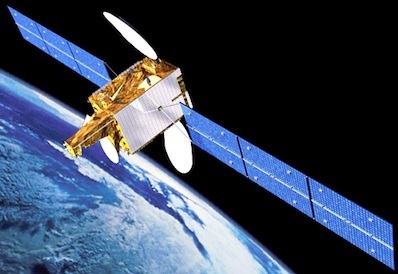Chinese Rocket Launches New Satellite for Pakistan

China deployed a communications satellite for Pakistan on Thursday aboard a Long March 3B rocket launched from a mountainous spaceport in the southwest China's Sichuan province.
The fresh spacecraft, called PakSat 1R, replaces Pakistan's aging national communications satellite launched in 1996.
The Long March 3B rocket soared off the launch pad at 1615 GMT (12:15 p.m. EDT). It was 12:15 a.m. local time Friday at the Xichang space center.
The 180-foot-tall rocket streaked off the launch pad with the help of four strap-on boosters, turned east from the Xichang space base and deployed PakSat 1R in orbit about 26 minutes after liftoff, according to the state-run Xinhua news agency. [Related Photos: China's 1st Space Station]
The satellite weighed about 11,000 pounds at the time of launch.
PakSat 1R was placed in an oval-shaped orbit stretching from a low point of approximately 110 miles to a high point of about 26,000 miles. Its orbital inclination was about 24.8 degrees, according to independent tracking data.
The spacecraft will reach a circular orbit about 22,300 miles above the equator in the coming weeks. PakSat 1R will enter service after testing of its engineering systems and communications payload.
Breaking space news, the latest updates on rocket launches, skywatching events and more!
Stationed at 38 degrees east longitude, PakSat 1R will provide communications and broadcasting services to Pakistan and neighboring regions for at least 15 years. The satellite carries 18 Ku-band and 12 C-band transponders, according to Pakistan's Space and Upper Atmospheric Research Commission, or SUPARCO.
SUPARCO is Pakistan's national space agency, which fields the government's Earth observation and communications satellites.
PakSat 1R was built by the China Academy of Space Technology and is based on the DFH-4 spacecraft platform. China has reached agreements to build DFH-4 communications satellites for several non-traditional players in the space industry, including Pakistan, Nigeria, Venezuela, Laos and Bolivia.
Thursday's flight was China's seventh space launch of the year. All of the missions have been successful.
Copyright 2011 SpaceflightNow.com, all rights reserved.
Stephen Clark is the Editor of Spaceflight Now, a web-based publication dedicated to covering rocket launches, human spaceflight and exploration. He joined the Spaceflight Now team in 2009 and previously wrote as a senior reporter with the Daily Texan. You can follow Stephen's latest project at SpaceflightNow.com and on Twitter.


